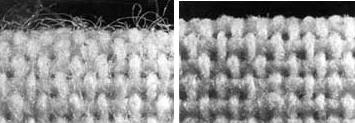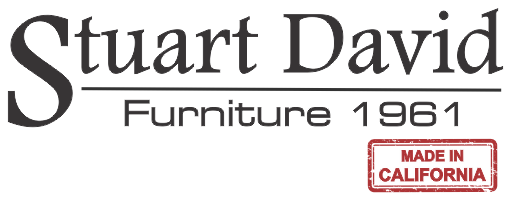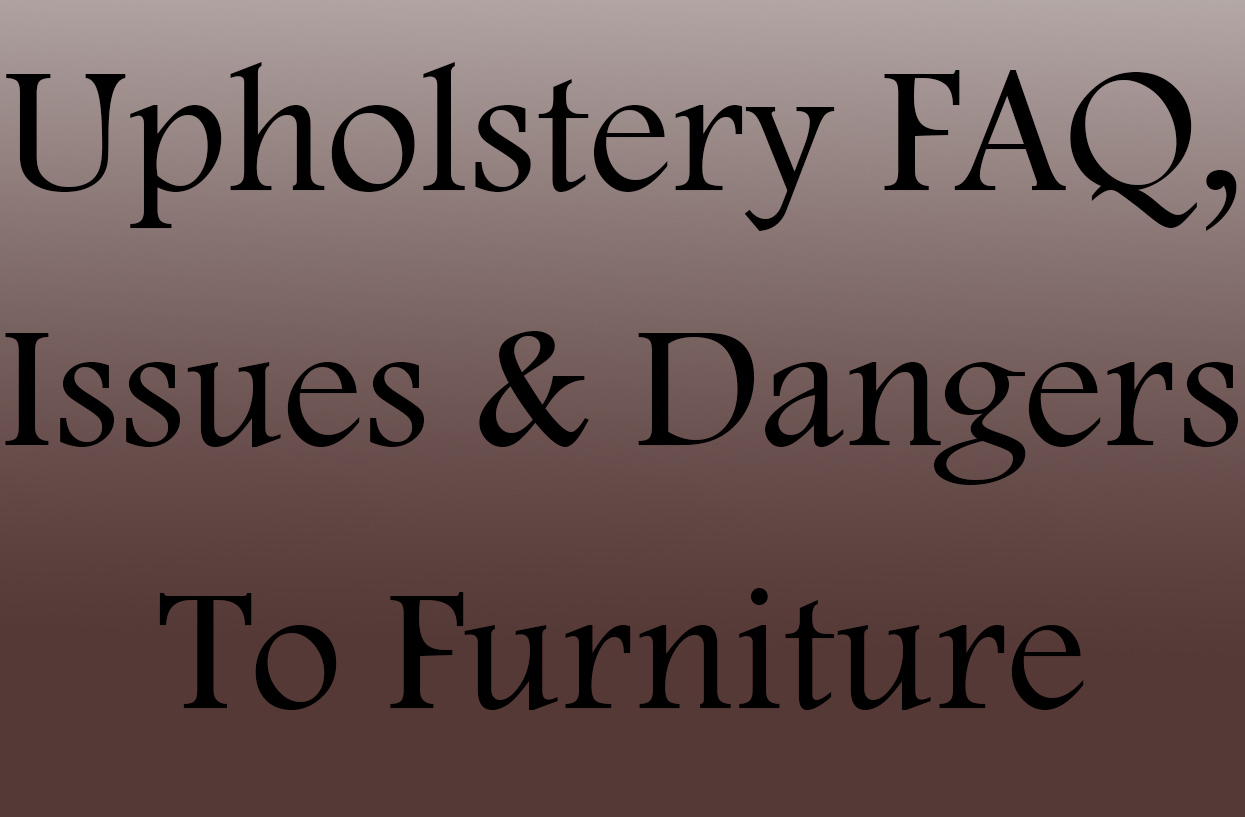This page should answer some of the questions you may have regarding issues concerning your upholstered furniture that was purchased (or will be purchased) from our showroom.
Contents:
1: Comfort Wrinkles
2: Pilling
3: Dangers to Your Furniture
4: FAQ
5: Puffy Cushions
6: Marks in Leather
7: Leather Temperature
8: Longevity
9: Warranty Info
Comfort Wrinkles
As you settle into your new fabric or leather upholstery, “comfort wrinkles” will begin to appear. This is a natural part of the upholstery maturing process.
Comfort Wrinkles are caused by many things. They are normal in upholstered furniture that is designed to have soft seating and back support. The type of covering and filling has a significant role reducing comfort wrinkles.
The standard foam seat cushion is constructed with an inner core of high density, high resiliency premium urethane foam between thick layers of resilient polyester fiber. Loose back pillows are filled with 100% polyester fiber. This is the same material used to fill high quality bed pillows. Like bed pillows, furniture cushions must be hand fluffed and turned frequently to maintain a soft, well filled appearance.
The soft and comfortable cushions and pillows used with better quality furniture will provide years of lasting service if properly maintained. Fabrics and leathers that provide flexibility combined with filling materials that compress softly, provide the best comfort benefits. These same features also create Comfort Wrinkles in cushions and pillows that are characteristic of the construction and should not be considered defect.
Some fabrics and leathers will show Comfort Wrinkles when the cushion casings are originally filled. Most fabrics will develop wrinkles with use. The more flexible fabrics will generally develop more wrinkles.
All leather will stretch and form comfort creases as a result of being sat on. The effect is called puddling. Puddling occurs from the initial use period and generally does not continue beyond this, as the amount of stretch is directly related to the amount of compression. Factors that contribute to the amount of puddling are the size of the leather panel (large panels verses smaller segmented panels), the density of the foam, type of suspension (webbing/no sag springs) and the amount of weight placed on the seat. Puddling is not a fault with the leather; rather it is a good indication of quality manufacturing as large pieces of leather are used.
Longer cushions tend to wrinkle more readily than narrow cushions. One-piece sofa or love seat cushions will develop comfort wrinkles more quickly than two or three piece cushions regardless of the fabric. The larger expanse a fabric covers, the less support there is to stabilize it, allowing for more deflection of the fabric. In thicker cushion cores, softer foam is used to achieve the desired comfort. However, when filling cushions, these softer cores do not allow as much push from front to back and side to side, thus permitting more wrinkles to occur.
The tighter a fabric is woven, the less it will breathe. The less a fabric breathes, the firmer the product will sit. The firmer it sits. The less it will wrinkle. This is why the same style in two different fabrics will sit differently. Latex backed fabrics will help eliminate wrinkles in the fabric, but will alter seating comfort and the appearance of softness.
Even when using the highest quality foam and fiber wrap available, there will, over time, be a loss in loft in the fiber wrap and a slight loss of compression strength in the foam. These factors added to the fact that fabrics stretch and lose some of their recovery properties, result in comfort wrinkles. Fluffing and stroking cushions regularly, along with reversing them, will reduce the amount of wrinkles and aid the fabric in wearing better.
Even though the materials used by manufacturers are of the same general quality, they can be different because of their fiber content, construction, wear ability and stretch ability. All materials are tested to meet our high quality standards.
Climate affects fabric just as it does wood. Heat, cold, humidity and sunlight contribute to fabric instability.
Soil repellent coatings or treatments applied other than in the manufacturing or finishing process may break down the backing of the fabric. It can also react to the cushion cores themselves.
UPHOLSTERY PILING
A pill is a small ball of fibers that form on the face of a piece of fabric. It is caused by abrasion on the surface of the fabric and is considered an unsightly occurrence on furniture.
What causes pilling?
Loose fibers have a natural tendency to move to the surface of a piece of fabric, where they are subject to friction. This can cause the fibers to twist together into small balls. Fibers that remain secured to the fabric are also twisted into the ball, so that the pill is then secured to the surface of the material.
Friction is caused in the normal course of people using their furniture; rubbing against the surface causes friction.
Pilling is more noticeable on man-made fibers. This is mainly because natural fabrics shed loose fibers easily while man-made fibers are notoriously strong, so the pills are anchored strongly to the fabric.
Should I send the fabric back?
It is important to note that pilling is not a fabric defect or fault, and is not covered under warranty. It can be compared to the shedding experienced when purchasing new carpet – think about the way carpet behaves when newly installed, as there are constantly new loose fibers coming to the surface over the first few months of use. This is completely normal and will reduce once the excess fibers are gone.
Consumers are sometimes concerned that pilling means that the fabric is wearing away and disintegrating – this is not the case. Pilling is a normal occurrence caused by wear and tear, and does not affect the durability or functionality of the fabric. It is easily removable.
How do I remove pilling?
The quickest and most cost effective approach is to use a battery operated pill shaver to remedy the situation. These small, easy to use appliances are available at Target for about $10. If piling reoccurs, it can be simply shaved again. This may occur several times, but the piling will diminish and eventually cease once the excess fibers are removed.
Can I buy fabric that doesn’t pill?
Since all fabrics will pill to some extent, the possibility of it happening should not be a main concern when choosing an upholstery fabric.
However, there are fabrics that are less likely to pill. Some are treated or coated during the manufacturing process to adhere excess fiber to the surface of the fabric. Some are also put through a singeing process, which quickly burns the excess surface fibers away.

Above: Close up of fabric before and after singeing
Smooth, tightly woven fabrics and fabrics made from tightly twisted yarns are less likely to pill l, because the fibers are held tightly in the cloth. When a fabric is made from more than one fiber type, where one fiber is strong and one is weak (for example poly cotton blends) piling will be more noticeable, because the weaker fiber wears and breaks, while the stronger fiber holds the pills to the cloth
Ultimately, if you notice that your furniture is developing pills, don’t be alarmed. It is easily remedied and does not mean your furniture is made of poor quality fabric.
Be Aware Of Dangers To Your Furniture
· Sitting on the back or arms of your furniture can cause unwanted wear.
· Jewelry, silverware, even a sharp pencil can mar leather. It’s important to keep sharp objects away from your furniture, even fabric. Be aware of what might be in your pockets!
· NEVER use harsh chemicals or cleaning agents on your furniture. Avoid all products containing solvents, bleach, harsh cleaning agents or oils, as they will damage the furniture covering and void the warranty. See one of our associates for the cleaning code for the fabric/leather you selected.
Frequently Asked Questions
· Puffy Cushions: Your furniture cushions may arrive looking full and puffy. Don’t worry, this is normal and to be expected. Once you start sitting on the sofa, the cushions will soften and get more comfortable in time and differences in cushion firmness will disappear. If you have removable seat cushions, consider rotating them once a week for the first month then as needed to ensure even wear.
· Marks & Wrinkles: Leather is a natural product and no two are alike. A variety of markings like healed scars and abrasions may be visible and are not considered defects but rather add to the character of the piece, reflecting its history. See “Comfort Wrinkles” section above.
· Temperature: Leather maintains room temperature until it comes in contact with your skin. Then it adjusts to your temperature, ensuring natural comfort. Real top or full grain leather does not have that “sticky hot” feature so many have come to expect from “leather.”
· Longevity: It’s important to remember that most experts rate leathers at 4:1 lifetime over textiles. This means that for every ONE (1) leather piece you go through, you would have gone through FOUR (4) textile pieces. That’s 3 extra trips to the store, choosing 3 new furniture pieces, and most importantly, spending the money for those 3 pieces.
Warranty Information:
Warranty Information for manufacturers other than Stuart David Furniture can be found on those manufacturers’ websites. Rather than deal with the manufacturer directly, you can contact us at 209-537-7522 should the furniture fail at any time during the life of the original owner due to defects in workmanship or material (not due to normal wear, misuse, neglect or abuse and subject to the manufacturers discretion)
This warranty does NOT apply to defects resulting from abuse, alterations or accidents.


